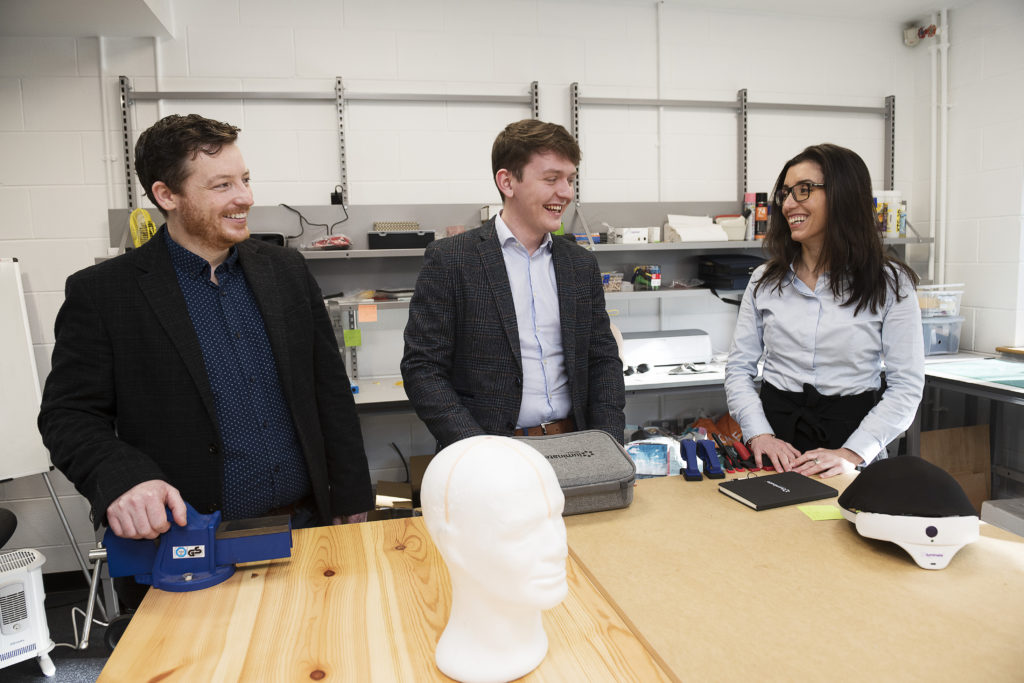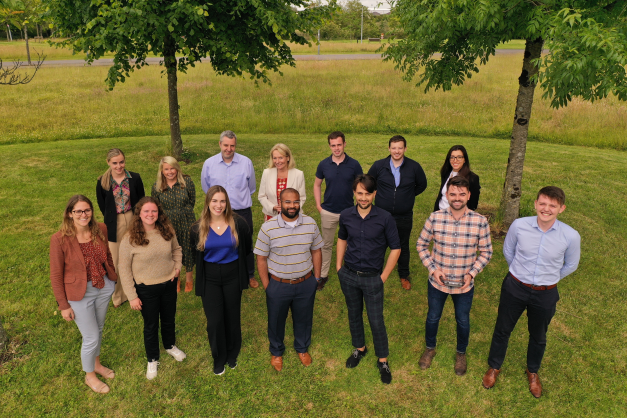From hand-held devices that quickly assess and evaluate brain impairments and injuries like stroke to helping patients suffering from vertigo, dizziness and imbalance, we look at how spin-outs flowing from Ireland’s third-level institutions are changing healthcare practices
“It gets lonely,” tweeted Elissa Benjamin after “chemo woke me up again to mass amounts of hair in my bed.” That chemotherapy causes hair loss for people like Elissa was, for a long time, taken as a fact of life.
Until Luminate, a university spin-out in Galway, decided it shouldn’t be. And designed a cap-like device to prevent the delivery of chemotherapy agents to the hair.
Headed by Aaron Hannon, a former research fellow in Galway’s university, this start-up is just one of a wave of spin-outs from Ireland’s third-level institutions changing healthcare around the world.
“Ireland is probably one of the best places in the world to start a spin-out company,” Hannon tells SmartHealth. The pipeline from having a research idea to closing a seed round investment in a spin-out company is a well-worn path, particularly in Galway’s medtech cluster.
Hannon’s start-up received €4.5million in November from the Irish Government’s Disruptive Technologies Innovation Fund, which was set up in 2018 with €500million to bring researchers and industry closer together.
A hairy situation
The device, which they call Lily, places pressure on the entirety of a person’s scalp, stopping the chemotherapeutic agents from entering blood arteries close to their hair follicles.
There was an existing way to counter hair loss from chemotherapy-scalp cooling, which makes blood vessels narrow and also reduces the amount of chemotherapy reaching hair follicles.
But cold caps are very cold and tight, and can cause headaches. Three million cancer patients each year lose their hair in the US and Europe alone because of chemotherapy, a side-effect called chemotherapy-induced alopecia.
The reason is that chemotherapy affects all the most rapidly-dividing cells in a patient’s body, not just the cancer cells.
So it especially affects hair follicles as well as the linings of your mouth and stomach. 47 per cent of women going through chemotherapy consider hair loss the most traumatic part of chemotherapy.
Eight per cent would even decline the treatment because of fear of losing their hair.
In the coming year, says Hannon, his focus is on getting to a first in human clinical trial for Lily, “with a view to bringing the Lily device to patients in the US in 2023 or 2024”.

Aaron Hannon and members of the Luminate team with their Lily device
His start-up is also doing pre-clinical research to develop their next device,
Lilac, which is intended to keep chemotherapy from causing nerve damage to a person’s extremities. Chemotherapy treatment can bring about pain, burning, or a feeling of pins and needles in a person’s hands, fingers, feet, arms, and legs, which is called peripheral neuropathy.
Hannon’s startup is aiming to raise its Series A funding as it works on these two devices. It joins a growing number of companies developed from university research, both in Ireland and worldwide.
“I think more PhD students think of that, than a decade ago. You have PhD students pushing supervisors to say, is there any translational opportunity here?” says John Lee Allen, a surgeon and health technology venture capital investor.
And “then funders in grant reports are looking to say, is there any opportunity for company formation here,” too.
The spin cycle
There are a few things that “set Ireland apart” in producing health tech spin-outs, says Hannon.
First are important research labs like the Translational Medical Device Lab (a University of Galway device lab set up in 2015 and embedded in a regional hospital) and programmes like BioInnovate (a medtech fellowship programme affiliated with Stanford).
These, Hannon says, have “shifted their focus” to finding the best clinical needs to research (being “technology agnostic” rather than fixed on any particular technical area of expertise.
Then, once an idea is formed, Enterprise Ireland’s Commercialisation Fund provides support for a one to two-year window for founders based in universities to develop their technology and a business plan to a point of spin-out readiness.
These two steps, he says, are “very unique” – most labs focus on one core technology, and then most researchers struggle to leave an academic career for a fledgling start-up.
Whereas with the Commercialisation Fund, there’s a pretty clear pathway for university-based experts to develop a potential start-up within the university setting.

The Luminate team who are based in Galway
Spin me round and round
So for founders, what are the benefits and drawbacks of doing it all the spin-out way?
On the down side, says Hannon, starting in a university environment can insulate founders from “the real world”. And being bound by universities’ rules around procurement “can make your start-up run more slowly at first,” he says.
A big challenge in being an Irish spinout lies in hiring the right talent. Part of this problem is in competing with overseas multinationals on salaries and benefits, but also there is still “a lack of broader awareness of start-ups,” meaning Irish spinouts spend lots of time “about what success in a start-up could mean for them”.
But the benefits are clear, in access to grants (before and after spin-out), leading researchers who can help in solving problems, and facilities.
When you are beginning a health care start-up “physicians (your customers) are much more likely to respond to a researcher than a salesperson!” says Hannon.
“It’s amazing how much you can get done when you don’t have to worry about paying for the lights to stay on,” he adds.






